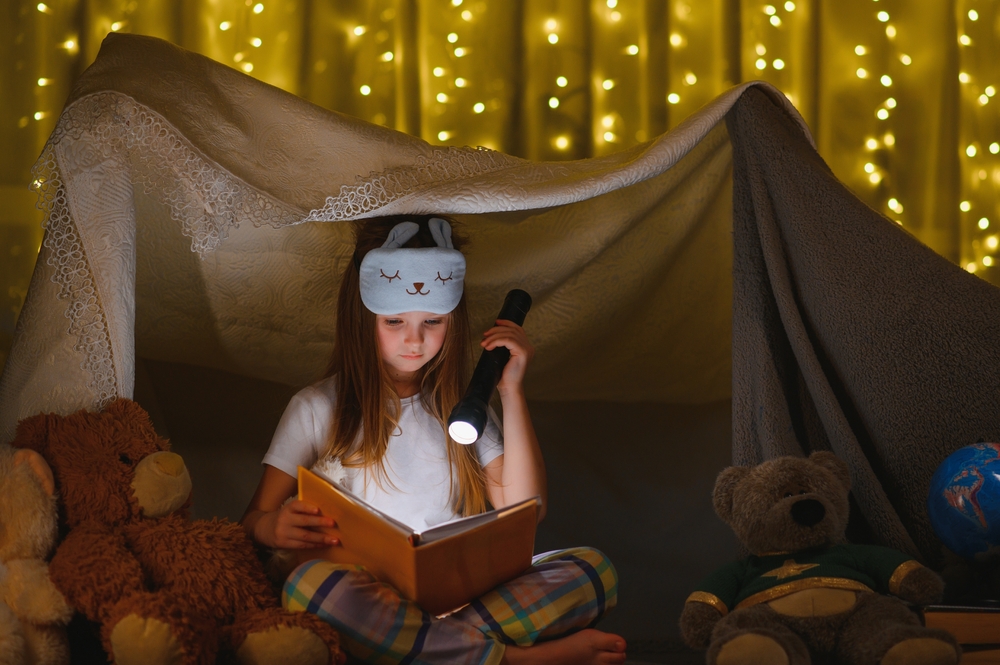
Reading comprehension becomes more abstract as children enter higher reading levels. While third graders are expected to answer the basic questions about a book or story, educators also may begin to expect them to read between the lines, too.
Children could fall behind in reading comprehension, and parents might not always realize that their child is struggling. The child might decode flawlessly but could fail to discern the basic meaning or the underlying themes of a story. This struggle might go unnoticed until a parent or teacher makes the connection. Here’s how to provide reading comprehension help for 3rd graders who are struggling with this area of literacy.
- Use reading comprehension bookmarks
- Chunk the text
- Use graphic organizers
- Teach re-reading
- Check the reading level
- Listen to the story
- Use reading apps or programs
Tips for Guiding Reading Comprehension
Teaching comprehension at home might not be as easy as helping children learn to decode. When children learn or struggle with sounds, this concept can seem a bit easier for parents to help children try to grasp. With letters and sounds, parents can use different strategies and correlate objects to both the sound and image of a specific letter.
Reading comprehension isn’t always so black and white. While early grades focus on the w/h questions of comprehension (who, what, where, when, why and how), the concepts, themes and characters in higher reading levels become richer, more fleshed out and much more complex. Children need to learn how to read between the lines—this is known as inferencing.
Comprehension will evolve into a focus on character analyses, more complex predictions, and the use and roles of metaphors and similes within a story. These more complex expectations won’t be introduced in third grade, but, eventually, children will grow into fluent readers who are expected to think deeper about the stories and books that they read.
For third graders, parents can use tools, tips and strategies to guide children as they deconstruct a story and look at the characters and plot to better understand meaning.
Reading Comprehension Bookmarks
Parents can print out reading comprehension bookmarks online. There also are many examples via different websites, and children also can make their own bookmarks. A reading comprehension bookmark serves as a visual reminder about what the child should think about as they read.
Most teachers send home information on the grade-level expectations for each subject. For reading, parents need to understand what children are expected to explain about the books and stories they read. Use these benchmarks and grade-level expectations to create bullet points that help children think deeper about the story.
Bullets can include the w/h questions, but they also might include prompts that encourage children to think about the similarities and differences of characters, their predictions for the next chapter, etc. Again, use the reading benchmarks for the grade-level to help create a bookmark focused on the third-grade comprehension expectations of the district.
Check out the site Teach Junkie to see examples of reading comprehension bookmarks.
Chunking the Text
Text chunking is a reading strategy that encourages children to focus on one section of text at a time. Some chunks are just a sentence. To chunk text to help guide comprehension, parents might encourage children to chunk by paragraph.
Give children a piece of paper or a note card to cover up the rest of a page and focus only on one chunk. Then have them think about the paragraph and talk about what’s happening.
After each page, children can go through and summarize the plot to further facilitate understanding. Children also could make notes on the note card to better remember what’s happening throughout the story.
Use Graphic Organizers
Graphic organizers are worksheets that are designed as a map of a story. Graphic organizers can focus on character, plot, etc. Organizers include sections for children to write details about the story or about details focused on a specific literary concept.
Graphic organizers can help children break down information to better understand the big picture. Using this tool also can help children review key information from the book or story.
The site Understood includes graphic organizers focused on summarizing, story elements, main ideas, retelling and more.
Teach Re-Reading
Chunking text can help children focus on a specific paragraph or section of a book or story at a time. However, children who struggle with comprehension also might need to understand that it’s ok to re-read information to gain clarity on what’s happening in the story.
Re-reading is a great strategy for children and adults to learn to use when they feel that they aren’t grasping the action of the story or the role of a character. Sometimes a chapter can be confusing or the mind wanders while reading.
Re-reading helps children gain understanding and also can help readers spot details that they might have missed and it’s an important strategy that can become useful in high school and beyond.

Check the Reading Level
Sometimes children struggle to understand what they are reading because the book is beyond their reading level. Children could have a friend who reads at a higher level and they might want to read the same book as their peers.
When a child seems to have difficulty following the plot or understanding a book, parents might want to check the reading level. If the book is too difficult, parents can help children find a similar story at the library.
If parents aren’t sure about their child’s reading level, they can touch base with their child’s teacher.
Use Audiobooks to Listen to Books
Audiobooks let children hear the book being narrated. Children who struggle with comprehension might benefit from listening to an audiobook as they follow along in a printed book.
Hearing a story can help children identify the emotion of characters and perhaps better understand character motivations, too. Sometimes hearing the book also can help children catch plot points they might have missed or even better understand the different characters (since the narrator typically changes voices for each character).
While not every child who struggles with reading comprehension might benefit from hearing a story, some might find that hearing the story helps them to better understand it.
Use a Reading App or Program
Children who struggle with reading comprehension also could benefit from using a lesson-based reading app. Readability is designed for children in preschool through fifth grade and can help children who struggle with fluency, vocabulary and reading comprehension.
Readability includes a built-in AI tutor that’s designed with voice-recognition software that allows it to learn each child’s voice. Children read aloud through Readability, and if they struggle to pronounce a word, the tutor will identify their struggle and provide help.
At the end of each book, the tutor also asks the child questions to test their understanding. If a child answers a question incorrectly, the tutor will show them the section of the book that provides clues to the answer. The tutor also will read the section aloud. The child will then have another opportunity to answer the question.
By allowing children to review a section of the story that helps them identify the answer, Readability helps reinforce the concept of re-reading to facilitate understanding. Children learn that it’s ok to look back and re-read.
Readability also offers a Storytime feature that lets children listen to their favorite Readability stories. With Storytime, children can listen to stories from anywhere and at any time. Hearing the story also could help some children boost their comprehension.
Readability also encourages exploration. Each book includes a vocabulary list of new words that the child will learn through the story, but children also can tap any word in the story to hear the definition or hear the word used in a sentence. Every new word is saved into a child’s word bank.
Parents who are interested in using a reading program to help their child improve their reading comprehension can explore Readability for free for one week. Sign up for a free seven-day trial to use the reading tutor and understand all the program’s features.

 Español
Español